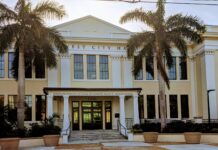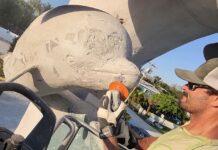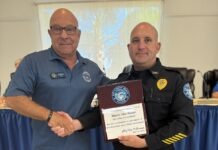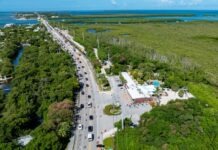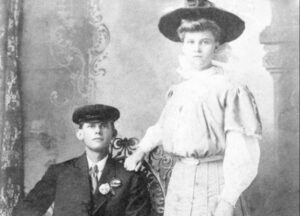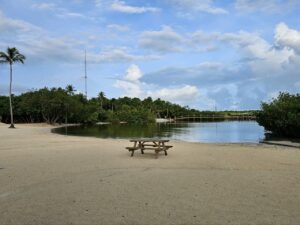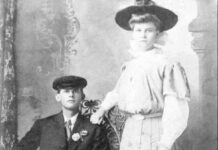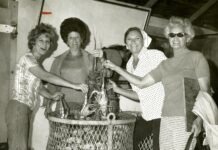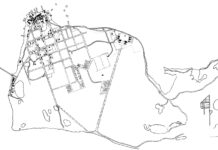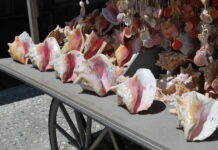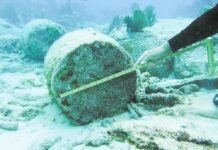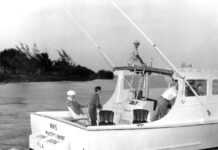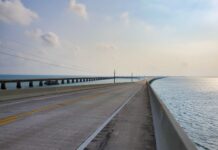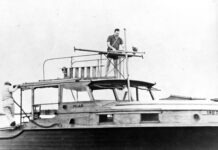Piracy is alive and well in the warm, clear waters surrounding the Florida Keys. It is not a classic style of piracy as was once perpetrated by Blackbeard, Calico Jack Rackham and the like, but, as is the case with every act of piracy, it involves crime on the high seas (or under the high seas).
In the 1950s, 1960s and 1970s, the attitude held by treasure hunters scouring the Atlantic shallows in search of gold and glory was not generally considered environmentally friendly. Once the whiff of treasure permeated the senses of the salvors, no stone, coral reef or seagrass meadow was left unmarred — by use of crowbars and dynamite when necessary. It wasn’t just treasure hunters; there were also those profiting from the souvenir trade, harvesting coral from the reef.
Martin Meylach, a treasure hunter who also worked for the souvenir trade, wrote in his book, “Diving to a Flash of Gold,” “At Looe Key, we dropped anchor over a forest of staghorn coral. Below, the trees looked upward from the reef in clumps, each tree a full five feet across. The things were unbelievably fragile, their petals ready to crack like eggshells. It was a job of brute strength to steady each tree and chip it free at the base with a chisel-pointed crowbar.”
Fortunately for the local waters, the government stepped in and began to make efforts to bolster the health and safety of the Florida Reef. In 1975, the Key Largo National Marine Sanctuary was established, followed by the Looe Key National Marine Sanctuary in 1981. A significantly wider net of protection was cast with the designation of the Florida Keys National Marine Sanctuary on Nov. 16, 1990.
Today, sanctuary boundaries cover 2,900 square nautical miles, stretching from the Biscayne National Park boundary to the Dry Tortugas, some 70 miles southwest of the Conch Republic’s southernmost city.
Where once upon a time, men like Art McKee – considered the father of modern treasure hunting – paid the state $100 a year to hold claim over a wreck site, it was no longer possible to legally search the Atlantic shallows, spot a promising site, drop anchor and dig on a suspected shipwreck. For treasure hunters and those working in the souvenir trade, the designation of the sanctuary effectively drew a line in the sand.
The policy change has remained a point of contention between treasure hunters and those charged with protecting natural and cultural resources. The sanctuary did not outlaw the work of salvors in Florida Keys waters. Rather, they required the salvors to apply for permits issued by sanctuary officials.
Salvors can apply for two kinds of permits; the National Oceanic and Atmospheric Administration (NOAA) and the state of Florida review both.
The first, a survey and inventory permit, allows non-intrusive surveys to search for or document a site.
The second kind of permit, a research and recovery permit, is considered after all the necessary surveys, inventories and required reports are submitted to the sanctuary and reviewed. Still, even after each of the sanctuary’s conditions have been met to qualify for the more intrusive research and recovery permit, there is no guarantee the application will be granted.
And this is where the piracy comes into play. Some people out in the sanctuary waters have foregone the permit process and are actively hunting treasure — whether that treasure is of a historical nature or one of silver and gold is a moot point. While I was still working as a curator for a local museum, people would offer artifacts they had found while diving out at the reefs, hoping they could be displayed. Some of them are on display — even two Spanish reales, a unit of currency. However, unless those artifacts had been recovered prior to the establishment of the sanctuary, I was not going to display them publicly.
This week, next week and every week, when the weather cooperates, people will be out on the reef looking for shipwrecks and the histories and mysteries they may contain. Those doing the hunting, and sometimes the spoils that have been recovered, are not infrequently shared on social media, which, in my opinion, is tantamount to flying a pirate flag.
As someone who loves these local histories, the harm is that when these artifacts are brought to the surface and pirated away, they become lost (in best-case scenarios) to private collections where only a select few can appreciate them. In worst-case scenarios, the artifacts are not documented, lose their provenance, are not properly stored and cared for and become lost, damaged or ruined.
Searching through suspected shipwreck sites and removing artifacts also alters ecosystems that have developed, in some cases, over hundreds of years. Like everything, the subject is certainly nuanced, and working at the museum for eight years, I listened to arguments from both sides. Also, the sanctuary is a massive area and about as difficult to police as lobster poachers taking way beyond their limit during the lobster mini-season — which is not an invitation for people to go out on the water and act like pirates or to ignore the bag limits on lobster.
Like it or not, working the reef line for sunken ships is not what it was back in the silver-golden years when Art McKee rediscovered the 1733 fleet. While it might have been a bit of a Wild West situation back in the day, and the crews of competing treasure hunters occasionally drew pistols and other armaments on each other, at least it is (hopefully) less so today.
